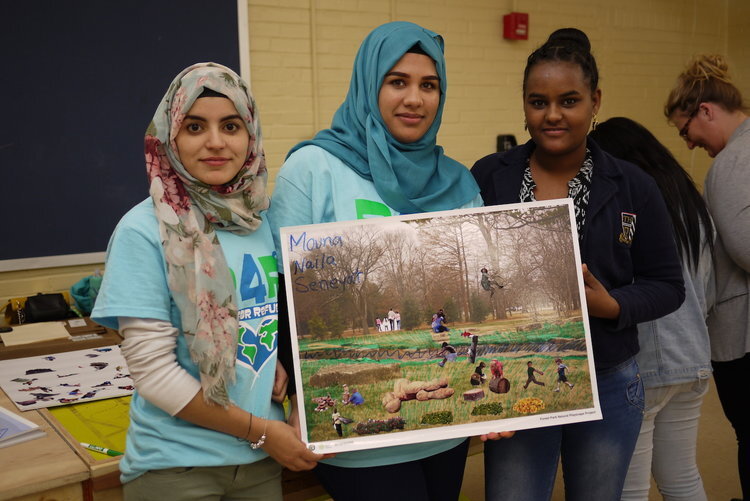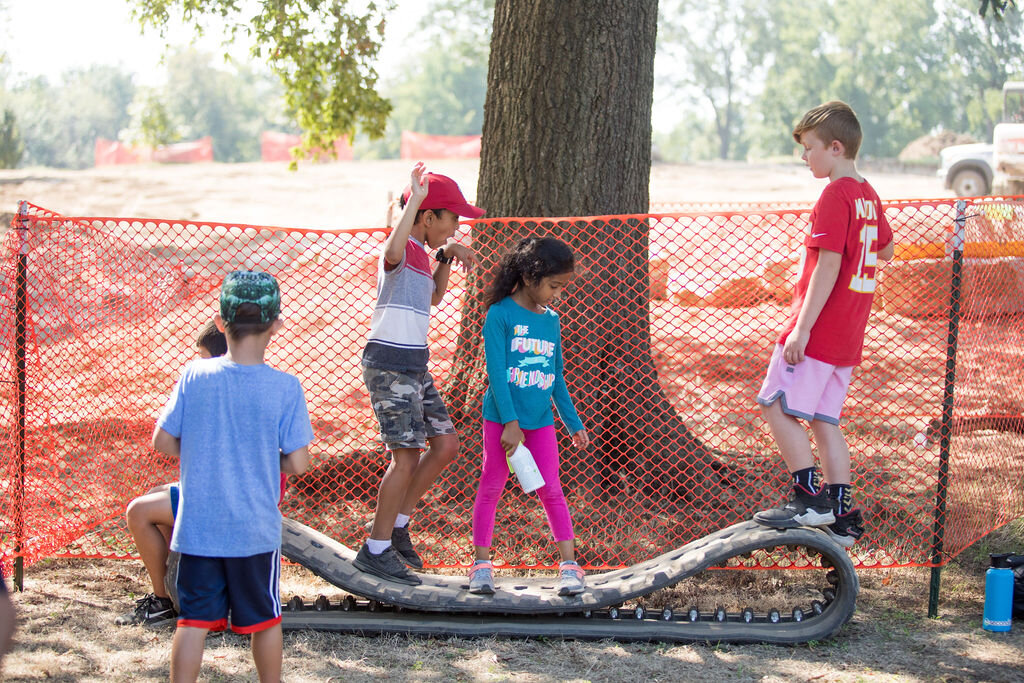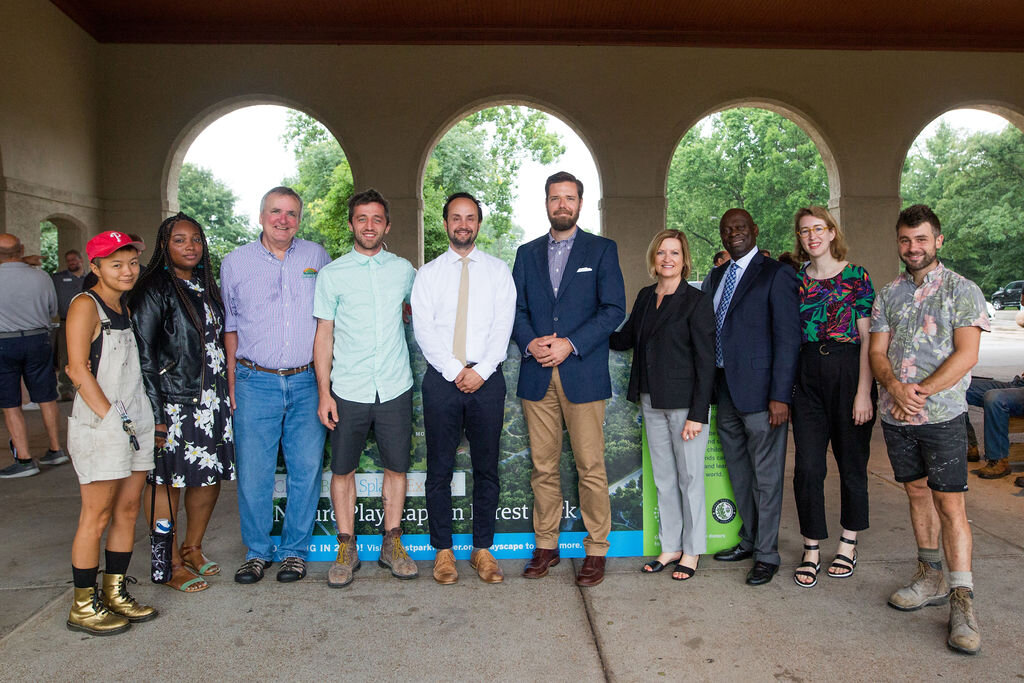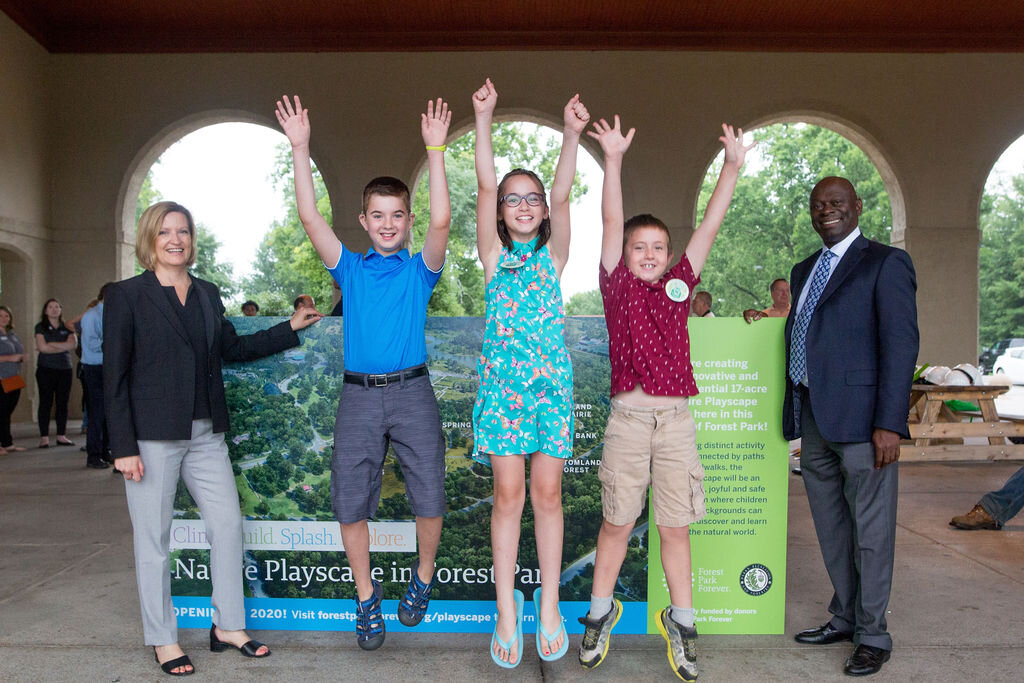Let’s Ask the Kids: A Behind-the-Scenes Look at the Design Process of the Nature Playscape
Imagine being given rocks, sticks, sand, and other natural elements with a blank canvas on which to create.
Your only requirement — make something that looks like fun.
What would you create? What would your 10-year-old self create?
This is exactly what area kids were tasked with as they helped Brooklyn-based Interboro Partners and St. Louis’s own Citizen Carpentry conceptualize what a nature-based play area might look like. Over several months during 2018, Interboro and Citizen Carpentry led innovative and interactive engagement with a diverse community of St. Louis youth from more than 20 schools, recreation centers and youth/education organizations to help with the design of a new Nature Playscape in Forest Park.
Interboro Partners sees engaging the community as an integral part of their planning process. “We believe that design is a lot better when the people who are going to use that space participate in designing it,” says Dan D’Oca, principal at Interboro Partners.
Mobile engagement stations were created based on ideas from the young future Park visitors. These full-scale prototypes were then shared with the Youth Advisory Committee (YAC) for critique. This process created a feedback loop between the engagement station participants, the YAC and the Interboro team.
The 17-acre Nature Playscape, opening in 2020 and located between the World’s Fair Pavilion and the Jewel Box, will provide a space for families to connect with and explore nature. Since it is a space for the St. Louis community, involving kids and their parents in the planning process was important to the overall project.
Interboro was very intentional in their selection of participants to make sure that all kids had input in the design and felt it was a space for them. Parents were also given surveys so they could provide their thoughts as well.
With this project, there was another reason to involve as many kids as possible. “It seemed like a great opportunity to help build an audience for the Nature Playscape by involving people in the design of it,” says D’Oca. “The idea is that they will have a sense of ownership over it and be more excited about it and more likely to visit.”
Abby Pleimann and her brother Noah both participated in the planning sessions and share a sense of enthusiasm about their work, which involved brainstorming sessions in the Playscape area. They were asked to explore the space and write down or draw how they would want to interact with nature.
Noah says that “designing the Playscape” was his favorite part of the process. Abby is more motivated to see the finished product. “I want to see people having fun,” she says.
It’s clear that through their work, they understand the value of a Playscape and how it differs from a normal playground. “It’s going to be made of all nature,” says Noah. “The only thing not nature are going to be the water pumps.”
“It’s more interacting with nature,” says Abby. “There’s just many different ways — like if you’re building with logs, you can build them differently. With a regular playground, you do the exact same things. It’s always the same slides and all the same stuff, but this is always different.”
With this project, Interboro was able to use some of the specific ideas that came from the collages kids made during engagement sessions. Typically, general input informs the design; it’s not often that design details come from the engagement sessions, but that is what happened in this project. According to D’Oca, kids come up with ideas that are “far more interesting than anything I would imagine as a designer.”
There were some suggestions that came out of the engagement process that weren’t that surprising — for instance, many kids wanted climbing apparatuses and boulders to crawl over. But when one suggestion asked for “a rock connected to a stick going over a pond.” Interboro’s response: “Lets try it.”
Once complete, Forest Park’s Nature Playscape will have eight activity areas, including a Sensory Garden, Bottomland Forest, Wetland, Meadow, and Mounds. An ADA-accessible path will connect the areas. You can learn more about the Nature Playscape here.
Like many of the kids who participated in the planning process, Abby and Noah are excited to be able to explore in the Playscape once it is finished.
“It just makes me really happy,” says Abby. “I love being in nature.”
“This is their park,” says D’Oca. “It’s not going to be my park. Through our engagement process we got to see what they wanted a park to look like, and it was the best part of the process.”
Hundreds of youth helped the Playscape get this far. We can’t wait for thousands more to experience it when it opens in 2020.
Check out the progress happening thus far at the site of the Nature Playscape.




